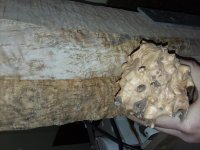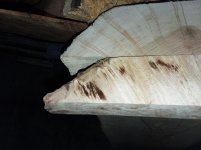So you're saying it was a stupid question?:grin:
When it comes to visual things they are not always what they seem. There are many examples of this. Colors that are the same that look different due to background. Shapes and sizes too. If the distribution of the eyes changed from straight up and down to a different pattern, even though there may be the exact same number of them there may be the appearance that there are more due to spacing and alignment. That's what I wondered.
I noticed looking at as many BEM cue photos as I can that many cue makers run their points right up the plain grain line side cutting this wood out and giving the appearance that there are more eyes on the piece even though there are not. You look at the butt sleeve on these cues probably made out of the same piece of wood and they look much less figured.
Here at my auto repair shop there are no stupid questions, only stupid mistakes.
JC
I think most do not mind most questions no matter how dumb they seem, it
eliminates some of the questions we might want to ask.

![S1920001 [800x600].jpg S1920001 [800x600].jpg](https://forums.azbilliards.com/data/attachments/350/350874-461382dd11fc78a55d48030664577a86.jpg)

